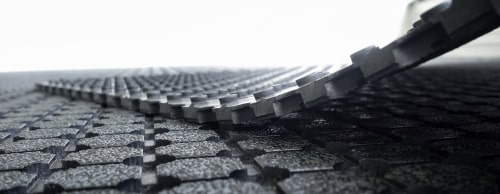There are many scenarios when slip-resistant flooring will be required in order to reduce the chances of an injury occurring. This type of material is often seen in wet rooms, public entrances, hospitals, schools, and play areas for children.

However, you might not be aware that there are different grades of slip-resistant flooring depending upon the requirements of the customer. How is this quality determined by the professionals? Let us take a quick look at the science behind slip resistance.
The Use of a Device Known as a "Tribometer"
Most professionals will employ the use of a device known as a tribometer when measuring the slip resistance of a flooring surface. A tribometer is essentially a mechanical instrument which mimics physical movements across a specific surface. Its instruments will determine how much slippage occurs as a result.
In order to address numerous scenarios, the
safety flooring sample in question will be exposed to substances such as grease, water and hydraulic oil. This enables the company to appreciate how slippery it may become during adverse conditions.
Anti-Slip Grading Techniques
Assuming that the tests mentioned above have been completed, the flooring will be provided with a grade. This grade is measured in ascending "R" values. The lowest possible grade is R9; equating to the least amount of resistance.
Industrial-grade anti-slip floors may achieve values as high as R13 (the highest possible mark). Of course, the customer will work with the supplier in order to determine which grade is the most appropriate for the location in question.
Do you require anti-slip floors for your home or business? If so, be sure to contact the professionals at
Flooring Supplies Direct we boast a wide range of options and many of these are stylised to address aesthetic concerns. We look forward to hearing from you.



